Your website is often the first impression a customer has of your business. If you use WordPress, you are in good company. It powers a huge portion of the internet. But with that popularity comes attention, not all of it good. Keeping your WordPress site secure is not just an IT task; it is a core business function. As technology evolves, so do the threats. Looking ahead to 2026, we can see new challenges and solutions emerging.
Understanding these future trends helps you protect your digital presence, your customer data, and your reputation. We will explore the key shifts in WordPress security, from smarter automated attacks to the growing importance of privacy. Let’s look at what is coming and how you can prepare.
Smarter Attacks and AI Driven Defense
Hackers are getting more sophisticated. By 2026, we expect to see more automated attacks powered by artificial intelligence. These bots will be better at finding vulnerabilities, guessing passwords, and adapting to security measures. A simple brute force attack, where a bot tries thousands of password combinations, will become more intelligent. It might learn from failed attempts to try more likely combinations.
For example, an AI bot could scan your company’s social media to find employee names or company milestones, then use that information to guess login credentials. This makes weak passwords like “CompanyName2026!” incredibly risky.
How to Prepare:
- Embrace AI Security: Fight fire with fire. Many security plugins are already incorporating AI to detect unusual behavior. A tool like Wordfence uses machine learning to identify and block malicious traffic before it reaches your site. In 2026, these tools will be essential, not just nice to have.
- Strengthen Authentication: Move beyond simple passwords. Two factor authentication, or 2FA, adds a critical layer of security. This requires a second piece of information, like a code sent to your phone, to log in. This simple step can block the majority of automated attacks.
- Educate Your Team: Your team is your first line of defense. At MoDuet, we emphasize the importance of creating strong, unique passwords for every login. Teach your staff to recognize phishing attempts and to never reuse passwords.
The Rise of Supply Chain Attacks
WordPress is powerful because of its ecosystem of plugins and themes. You might have a dozen or more plugins handling everything from contact forms to SEO. A supply chain attack targets these third party components. If a hacker can inject malicious code into a popular plugin, they can gain access to thousands of websites at once.
In the past, we saw this happen with a popular plugin where a vulnerability allowed attackers to create rogue administrator accounts. Businesses that were slow to update found their sites compromised. By 2026, these attacks will become more common as hackers see the massive potential payoff.
How to Prepare:
- Vet Your Plugins: Do not install a plugin just because it has a lot of downloads. Research the developer. Check when it was last updated. Read recent reviews to see if other users have had security problems. A well maintained plugin from a reputable source like the official WordPress Plugin Directory is always a safer bet.
- Update Everything, Always: This is the single most important security practice. Core WordPress updates, plugin updates, and theme updates often contain critical security patches. Enable automatic updates where possible. Set a weekly reminder to check for any that need manual attention.
- Limit Your Dependencies: Do you really need that extra plugin for social media icons? Every plugin you add is another potential entry point for an attacker. Keep your active plugins to a minimum. If you are not using it, deactivate and delete it.
Enhanced Focus on Data Privacy
Data privacy is no longer just a legal checkbox; it is a matter of customer trust. Regulations like GDPR have set a new standard for how businesses handle personal information. By 2026, we anticipate even stricter rules and greater consumer awareness. A data breach that exposes customer information can lead to massive fines and irreparable damage to your brand.
Imagine your ecommerce site is breached, and your customer list with names, addresses, and purchase histories is stolen. The legal fallout is only part of the problem. Regaining the trust of those customers will be an enormous challenge.
How to Prepare:
- Know Your Data: Understand what personal information your website collects. Is it just a contact form, or are you storing sensitive customer account details? Make sure you have a clear privacy policy that explains what you collect and how you use it.
- Secure Your Forms: Any form on your site is a gateway for data. Use tools that encrypt information submitted through forms. Implement anti spam measures like Google reCAPTCHA to prevent bots from submitting malicious content.
- SSL is Non Negotiable: An SSL certificate encrypts the data transferred between a user’s browser and your website. It is what gives you the “https://” at the start of your URL. By 2026, browsers will likely show even more aggressive warnings for sites without one. There is no excuse to not have SSL; many hosting providers offer it for free.
Looking Ahead
WordPress security in 2026 will be a dynamic field. Threats will become more intelligent and complex, but our tools to combat them will also improve. The core principles of good security, however, will remain the same.
Being proactive is the best strategy. Do not wait for a hack to happen. By regularly updating your site, using strong passwords, and being selective with your plugins, you can build a strong defense. Security is a journey, not a destination. Keeping an eye on future trends ensures your business is ready for whatever comes next.
If you are feeling overwhelmed, you are not alone. Managing a website securely takes time and expertise. A partnership with a knowledgeable agency can provide peace of mind.
We Want To Talk To You About Your Marketing Goals.
Let’s Supercharge Your Online Growth!











